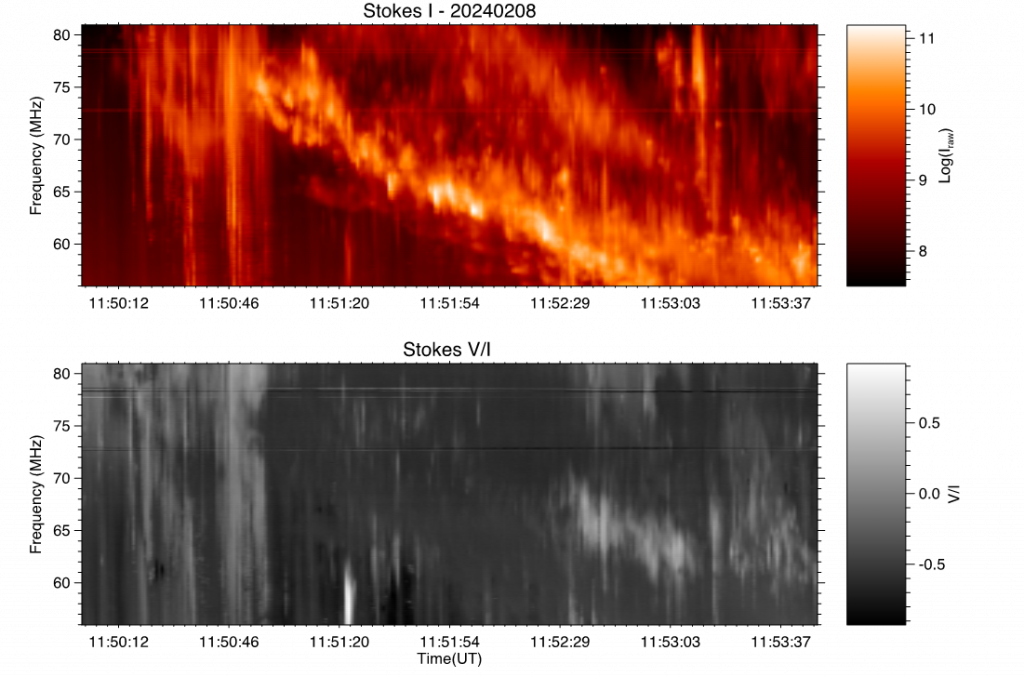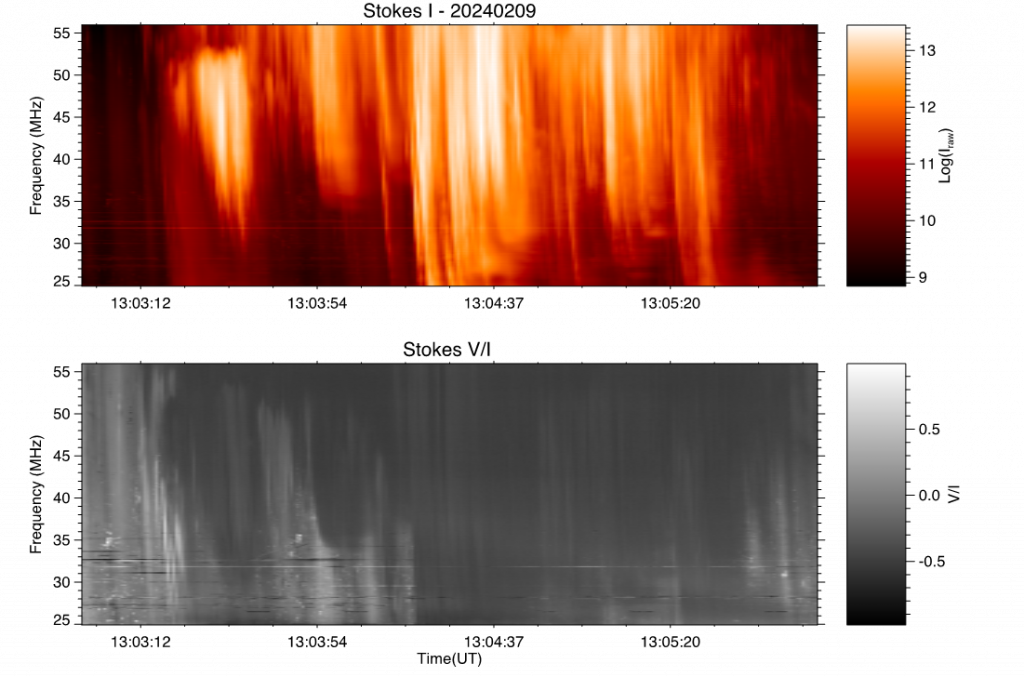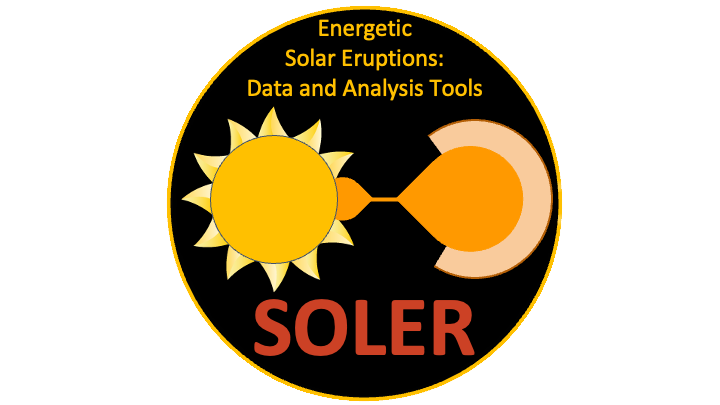The Sun welcomes SOLER
A few days after the SOLER kick-off meeting, the Sun erupted, producing (on February 8th) a coronal shock and (on February 9th) a powerful solar flare. NenuFAR, a new very large low-frequency radio telescope on the site of Nançay Radio Observatory, was observing the Sun during those two days, as the probability of a big eruption was forecasted to be high by the Space Weather Prediction Center of NOAA in the United States. We were lucky that the eruptions occurred during the European daytime and during our rather short observing time interval.
Figure 1 displays the observation of the emission related to the first event at radio frequencies in a so-called dynamic spectrum, where the observations of solar radio waves are presented as a function of frequency and time. The top panel displays the intensity of the radio waves. The signal slowly drifts from high to low frequencies (vertical axis) with time (horizontal axis): this is the kind of radio emission, a so-called type II burst, that is produced by electrons accelerated in shock waves propagating in the solar corona. The frequency of the emission reflects the density of the coronal plasma at the location of the source and since it drifts to lower frequencies, we can conclude that the shock is propagating outwards towards regions of lower plasma density. The bottom panel displays the polarimetric signal: black and white indicate different orientations of the coronal magnetic field in the emitting region. There is a lot of fine structure (in time and frequency) in this emission, revealing localized particle acceleration in the solar corona.

Figure 2 displays same kind of observations but for the X3.4-class flare occurring one day later. This event was not occurring in the same active region at the Sun as the first event, i.e., there were actually two large active regions facing the Earth that could produce eruptions. As is evident from the figure, this time the emission lanes scan the whole frequency range in a much shorter time: this means that the electrons responsible for these emissions, called type III bursts, propagate much faster than in the case of a type II burst generated by a coronal shock related radio source. From the rate of the frequency drift, we can estimate that the electron beam travelled 10 times faster through the corona during the flare than the shock event. This indicates that while the shock-related radio emission is formed continuously at the location of the propagating wave front, the flare-generated radio emission is caused by electron beams that are accelerated in the flaring plasma and subsequently propagate outwards in the solar corona.

In conclusion, less than a month after the SOLER project started, the Sun has already produced exciting eruptions of different character that will provide exciting observations for scientific analysis during the upcoming months.
